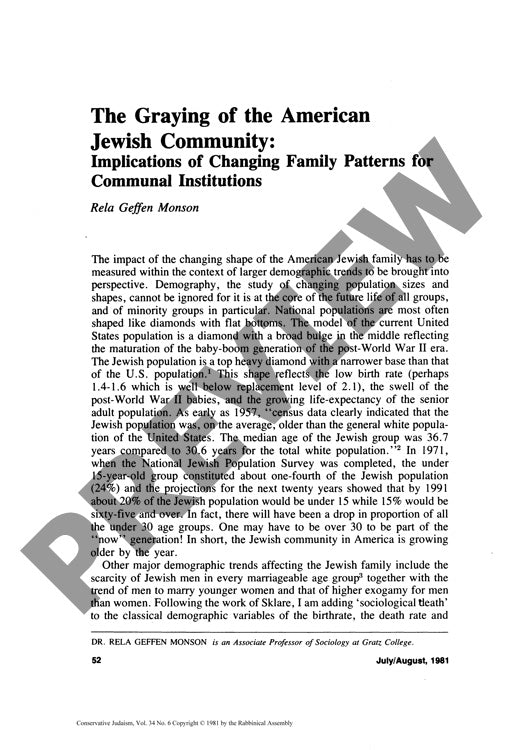The Graying of the American Jewish Commu
Couldn't load pickup availability
A profound demographic shift is reshaping American Jewish life as the community transitions from a traditional population pyramid to a "top-heavy diamond" structure. Low birth rates of 1.4-1.6 children per family, coupled with an aging baby-boom generation and increased longevity, are fundamentally altering Jewish communal dynamics. Analysis of National Jewish Population Survey data and census information from 1957 through projected 1991 patterns reveals dramatic changes: children under 15 will comprise only 20% of the population, while adults over 65 will reach 15%. Beyond aging trends, the community faces compounding challenges: a scarcity of marriageable Jewish men, rising intermarriage rates, geographic dispersal from traditional Jewish centers, and evolving family structures marked by increased divorce rates, dual-career households, and shifting gender roles. These demographic realities demand significant institutional adaptation, particularly from synagogues. Critical adjustments include reorienting programming from child-focused to adult-centered offerings, accommodating non-traditional families, developing support services for time-pressed dual-career households, enhancing adult education, and creating portable programming for dispersed populations. Without such strategic realignment, Jewish communal organizations risk becoming increasingly disconnected from the emerging demographic landscape of American Jewish life.

More Information
-
Physical Description
-
Publication Information
Published 1981
ISBN
-
Publication Credits
Rela Monson

